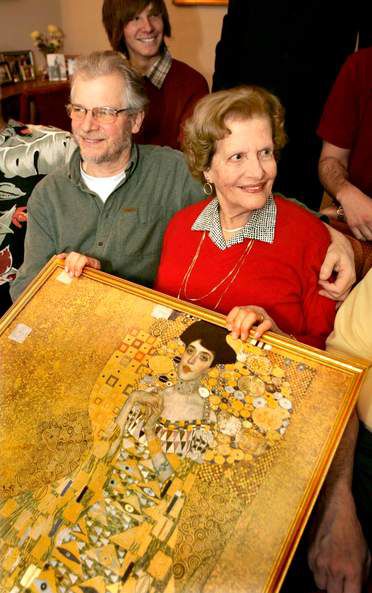Maria Altmann, who fought for return of art seized by Nazis, dies
Published 4:00 am Tuesday, February 8, 2011

- Maria Altmann, who waged a triumphant fight to recover Gustav Klimt's iconic gold portrait of her aunt, died Monday at 94.
LOS ANGELES — Maria Altmann, who escaped Nazi-occupied Vienna as a newlywed and returned to wage a triumphant fight to recover Gustav Klimt’s iconic gold portrait of her remarkable aunt, has died. She was 94.
Altmann died Monday at her home in the Cheviot Hills neighborhood of Los Angeles after a long illness, said family friend E. Randol Schoenberg.
Altmann was an 82-year-old grandmother living in Cheviot Hills in 1998 when she enlisted Schoenberg, an attorney who was the son of a friend, to investigate the Nazi theft of her Jewish family’s Klimt collection. The collection included Klimt’s famous “Portrait of Adele Bloch-Bauer,” hanging in the Austrian National Gallery.
The seemingly unwinnable battle took Altmann and Schoenberg to the U.S. Supreme Court — which ruled that the case could go forward. An Austrian mediation panel ultimately awarded Altmann and four other heirs the five Klimt paintings in January 2006.
“They delay, delay, delay, hoping I will die,” Altmann said in 2001. “But I will do them the pleasure of staying alive.”
Her family’s triumph sent shockwaves through the art restitution world, museums — and the art market. Cosmetics baron Ronald S. Lauder bought the gold portrait of Adele, calling it the “Austrian Mona Lisa,” for $135 million, a record at the time. It remains on permanent display at Lauder’s Neue Galerie in New York. The four other paintings brought $192.7 million at auction at Christie’s and disappeared into private collections after being shown at the Los Angeles County Museum of Art and the Neue Galerie.
“She never stopped believing that the paintings would come out,” Lauder said. “I thank her for her resilience.”
The seven-year legal battle was a raison d’etre for Altmann, a retired dress shop owner who was still selling clothes from her home when she began the case. She asked interviewers to excuse her when clients arrived, serving everyone Viennese coffee with dollops of whipped cream, addressing them as “my darling” and “my love.”
Born Marie Viktoria Bloch-Bauer in Vienna on Feb. 18, 1916, Altmann was the youngest of five children of Therese Bauer and Gustav Bloch. Her mother’s sister, Adele, married Gustav’s brother, Ferdinand, who had taken over his father’s sugar factory. After the Bauer sons died, the families united their surnames as Bloch-Bauer, in the style of Vienna aristocrats.
The Bloch-Bauers had their portraits painted by artists. Adele was a newlywed when Klimt began the gold-encrusted painting influenced by the Byzantine mosaics of Ravenna that became the “Portrait of Adele Bloch-Bauer.” Along with “The Kiss,” his erotically charged portrait of a passionately entwined couple, and “Judith,” in which he portrays the Old Testament heroine as a bare-breasted femme fatale, the “Portrait of Adele Bloch-Bauer” was a masterpiece of his gilded phase and a sublime embodiment of Vienna’s golden moment of artistic and intellectual vitality.
The portrait was a sensation when it was unveiled in 1907, and it made Adele an instant celebrity. Studded with Egyptian motifs and subtly erotic symbols, Adele’s face floated in the painting like a silent screen star. Klimt painted Adele with an expression of such vivid restlessness and longing that viewers would question the relationship between Adele and the artist, a notorious seducer.






